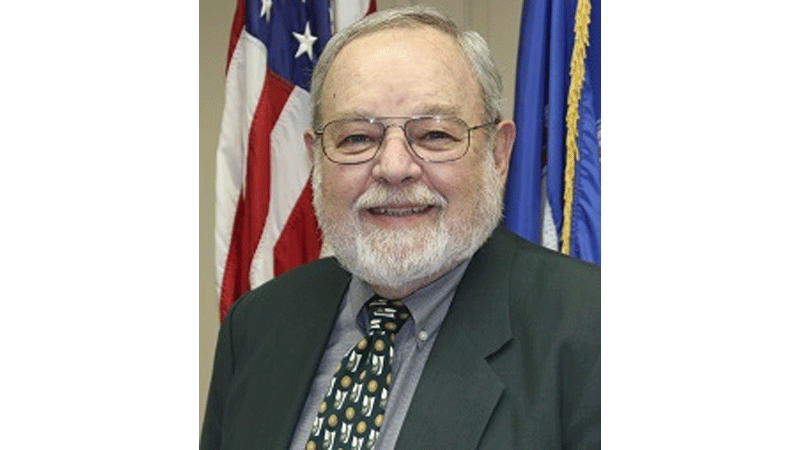Supervisor: ‘No confidence’ in school deficit explanation
Published 6:47 pm Tuesday, August 29, 2023

- Dick Grice
|
Getting your Trinity Audio player ready...
|
County supervisors will cover a fraction of Isle of Wight County Schools’ $600,000-plus deficit, but they are withholding the remainder until they get a more detailed answer on what caused the overage.
The School Board had allocated $67.9 million last year to its general fund, which accounts for the vast majority of the $78.1 million budget’s revenue and expenses. Superintendent Theo Cramer, on Aug. 10, informed the School Board that IWCS ended up spending $68.5 million, leaving the school division $603,163 in the red.
The supervisors voted unanimously on Aug. 17 to retroactively add an unexpected $90,715 increase in sales tax revenue to the school system’s 2022-23 budget, but not the remaining $512,448 Cramer says is needed to eliminate the deficit.
Supervisor Dick Grice, at the Aug. 17 meeting, told Cramer he has “no confidence” in the accuracy of the requested dollar amount, nor in Cramer’s explanation of how the overspending occurred.
“I just cannot believe these numbers, and I cannot in good faith vote on something that I don’t believe in,” Grice said.
Grice said he’d initially been prepared to support giving the full $603,163 Cramer had requested, contingent on the formation of a “review board” composed of “key individuals in the county and the schools” to review Cramer’s numbers.
School Board Chairman John Collick said the “consensus” among its members was to wait two months until the division’s 2022-23 books are audited.
Supervisor William McCarty said he would have had no issue with giving the money to balance the deficit.
“Whether it’s tonight, two weeks from now, a month from now, that deficit, you know, has to be made up from something somewhere,” McCarty said.
Grice quizzed Cramer on his assertion that the deficit had initially been much higher, at $2.2 million, but was reduced to the present $603,163 through a series of spending freezes and cuts that included saving $540,000 by deferring the purchase of four school buses.
Grice and Cramer’s predecessor as superintendent, Jim Thornton, each contend the half-million-dollar bus purchase wasn’t included in the adopted 2022-23 budget, and therefore couldn’t have been cut to save money.
A May 12, 2022, draft of the then-proposed 2022-23 budget had allocated $4.2 million for the division’s transportation budget, and included a line-by-line breakdown of the funding that left blank lines for capital replacement of vehicles and capitalized lease payments. The final budget the School Board adopted on June 9, 2022 allocated $4.3 million, or only $100,000 more, for transportation costs.
“I will not let the current superintendent and the School Board make false statements to the public and the Board of Supervisors about large sums of money,” Thornton said during the public comment period at the Aug. 17 meeting.
Cramer had listed three causes of the deficit a week earlier while briefing the School Board, two of which he blamed on former Chief Financial Office Steve Kepnes, who left his employment with Isle of Wight County Schools in May 2022, four months before Cramer’s arrival. Kepnes told The Smithfield Times he’s being made a scapegoat.
The School Board, in January 2022, voted to raise the minimum pay for bus drivers to $20 per hour, and the minimum for bus assistants to $15 per hour. The board had planned to fund the raises for the then-remaining six months of the 2021-22 school year with Emergency and Secondary School Emergency Relief, or ESSER, funds the division had received from the American Rescue Plan Act, or ARPA, a $1.9 trillion nationwide coronavirus relief package Congress approved in 2021.
Cramer contends Kepnes never identified an alternative funding source to continue the raises into the 2022-23 school year. Kepnes and Thornton each dispute Cramer’s allegation.
Todd Christiansen, the division’s director of support services, estimated in 2022 it would cost just under $224,000 to fund the raises for the remaining six months of the 2021-22 school year, and another $447,000 to continue them for 2022-23.
The division’s 2021-22 budget lists $3.9 million in pupil transportation expenditures, which had increased to $4.2 million by the end of that school year according to the 2022-23 budget. A line-by-line breakdown of transportation expenses dated Feb. 4, 2022 – three days after the raises took effect – shows an additional $358,565 added to driver wages for regular routes as well as a $48,465 increase in special ed driver wages for a total increase in excess of $400,000.
The 2022-23 budget, as of its June 9, 2022, adoption by the School Board, allocated $4.3 million to the division’s transportation department, seeming to corroborate Kepnes’ and Thornton’s assertion that the raises were indeed funded.
Cramer, however, contends the transportation department ended the 2022-23 school year on June 30 with a $903,383 deficit. IWCS spokeswoman Lynn Briggs, in an email to the Times, said the division hasn’t identified an exact reason yet why the deficit is more than double what Christiansen had estimated as the 2022-23 cost of the raises. She, however, speculated that drivers having received a “step” in pay during the 2022-23 school year, coupled with associated cost of employee benefits, may have driven the expense of the raises higher than Christiansen had estimated
Cramer further contends Kepnes made a similar error when budgeting for substitute teacher pay, resulting in that line of the budget ending the year with a $445,000 deficit.
The third cause Cramer cited was a reduction in state funding that resulted from a decrease in enrollment.
According to a spreadsheet linked with a June 8 memorandum from Virginia Superintendent of Public Instruction Lisa Coons to division superintendents, Isle of Wight County Schools’ final bimonthly payment from the state brought the 2022-23 year-end total to $42.7 million, though Isle of Wight had budgeted for $43.5 million as of June 9, 2022. The nearly $866,722 difference is slightly lower than the nearly $945,000 deficit figure Cramer had provided to the School Board.
The bimonthly state payments are based on average daily membership, or ADM, which tracks the divisionwide student enrollment. Actual enrollment during the 2022-23 school year was 5,460, or 2% fewer students, than the 5,568 the state had forecast, Cramer said.
Thornton said his notes from his time as superintendent show $200,000 less than the $42.7 million as what was initially budgeted for state aid. The former superintendent said it was his practice “to be cautious” by not using the state’s maximum ADM estimate.





